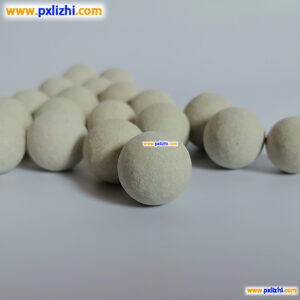
# Ceramic Ball Manufacturing Process and Applications
## Introduction to Ceramic Balls
Ceramic balls are high-performance spherical components made from advanced ceramic materials. These precision-engineered balls offer exceptional properties that make them ideal for various industrial applications. Their unique characteristics stem from the specialized manufacturing processes used to produce them.
## Manufacturing Process of Ceramic Balls
### 1. Raw Material Selection
The production of ceramic balls begins with carefully selected raw materials. Common materials include:
– Alumina (Al2O3)
– Zirconia (ZrO2)
– Silicon nitride (Si3N4)
– Silicon carbide (SiC)
### 2. Powder Preparation
The selected ceramic powder undergoes several preparation steps:
– Milling to achieve uniform particle size
– Mixing with binders and additives
– Spray drying to create free-flowing granules
### 3. Forming Process
Several methods are used to form ceramic balls:
– Isostatic pressing for high-density balls
– Extrusion and spheronization
– Injection molding for complex shapes
### 4. Sintering
The formed balls undergo high-temperature sintering:
– Temperatures ranging from 1400°C to 1800°C
– Controlled atmosphere (air, vacuum, or inert gas)
– Precise temperature profiles to achieve optimal properties
### 5. Precision Grinding and Polishing
Final processing steps include:
– Diamond grinding for dimensional accuracy
– Lapping for surface finish
– Polishing to achieve mirror-like surfaces
## Key Properties of Ceramic Balls
Ceramic balls offer several advantages over traditional metal balls:
– High hardness and wear resistance
– Excellent corrosion resistance
– Low density (lightweight)
– High temperature stability
– Electrical insulation properties
– Non-magnetic characteristics
## Applications of Ceramic Balls
### 1. Bearing Applications
Ceramic balls are widely used in high-performance bearings:
– Machine tool spindles
– Aerospace applications
– Medical equipment
– High-speed applications
### 2. Valve Components
Their corrosion resistance makes them ideal for:
– Chemical processing valves
– Oil and gas applications
– Water treatment systems
### 3. Grinding Media
Ceramic balls serve as excellent grinding media in:
– Paint and pigment industries
– Pharmaceutical production
– Food processing
### 4. Other Specialized Applications
– Semiconductor manufacturing equipment
– Precision measurement devices
– Spacecraft components
– High-performance sporting goods
## Quality Control in Ceramic Ball Production
Manufacturers implement strict quality control measures:
– Dimensional accuracy verification
– Surface finish inspection
– Material property testing
– Non-destructive evaluation
– Batch consistency monitoring
## Future Trends in Ceramic Ball Technology
The ceramic ball industry continues to evolve with:
– Development of new ceramic compositions
– Improved manufacturing techniques
– Nanotechnology applications
– Enhanced surface treatments
– Smart ceramic materials with sensing capabilities
Keyword: ceramic ball
Ceramic balls represent a critical component in modern industrial applications where performance and reliability are paramount. Their unique combination of properties continues to drive innovation across multiple industries, making them an essential element in advanced engineering solutions.